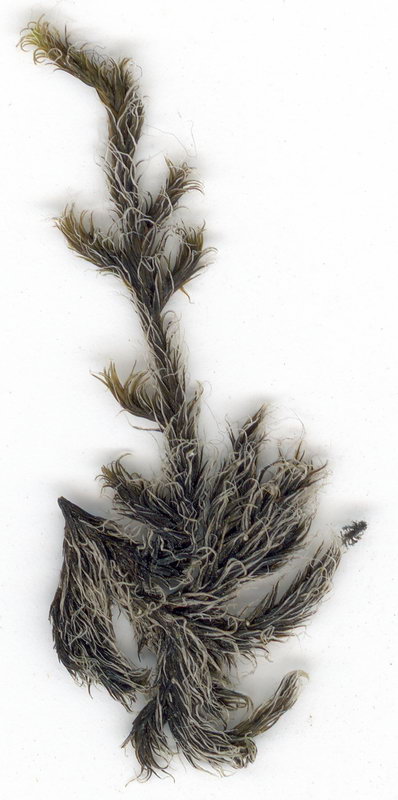7 Stems slender, elongated; shoots pale greyish green with conspicuous white' brushes' at tips when dry; capsule immersed; siliceous rocks in mountains; no nerve Hedwigia ciliata
More densely tufted; shoots dull or dark grey-green; hair- points not uniting to form obvious terminal brushes; capsule on evident seta. Like Grimmia trichophylla but it has wider leaf and broader base to the hair-point Rhacomitrium heterostichum
8 Stems very short (0.5-1 cm. tall) 9
Stems taller 10
9 Blackish plant of siliceous rocks on mountains. Like G. pulvinata but cushions not dense and mound-like Grimmia doniana
Green plant very common on lowland walls, etc.; lots of capsules with spiral peristome teeth Tortula muralis
10< Plant tinged, sometimes strongly, with reddish brown (at least on undersides of leaves) 11
Plant some shade of green 12
11 Leaves large (3-5 mm.), with broad tips, widely spreading- recurved when moist; rarely fertile, but if so, seta present; leaf top narrows abruptly (in T. ruraliformis narrows gradually) Tortula ruralis (= Barbula ruralis)
Leaves smaller (1.5 mm.), narrow at tips, never spreading- recurved; often very fertile; capsules immersed, with red lids (achterlichtmos<); glass hair toothed Grimmia apocarpa (= Schistidium apocarpum)
12 Cushions dense, hemispherical, seta strongly recurved (when young and moist); very common on lowland wall tops Grimmia pulvinata
Cushions looser, not mound-like or hemispherical as above; seta straight 13
13 Leaves with wide apices, spreading-recurved when moist; dense golden-green tufts or cushions on roofs or calcareous rocks Tortula ruralis
Leaves with narrow apices, spreading-recurved when moist; on siliceous rocks Rhacomitrium heterostichum

 |
For comments about this site
please mail to:
 (e-mail address given as graphic to avoid spam) |